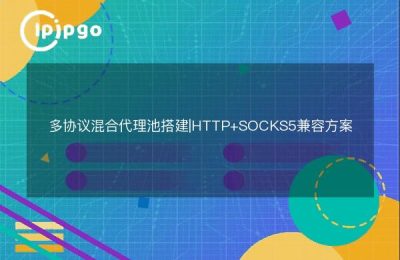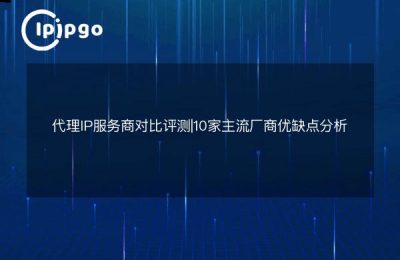
I believe you are not unfamiliar with web proxy IPs, which can help us hide our real IP address, protect our privacy, and also bypass some restrictions and protection mechanisms. Without further ado, let's explore it!
HttpClient represents the HttpClient object.
Before we start to delve into the HttpClient method of setting proxy IPs, we should first understand HttpClient. HttpClient is a very powerful HTTP client tool, and it is widely used in the Java field. By using HttpClient, we can easily send HTTP requests and receive responses. So the question is, how do we build a proxy channel to the target site?
A little trial and error: basic proxy IP setup
Next, I'm going to take you on a little test drive. Now let's assume that you have created an HttpClient object, which we will use for the subsequent operations. See the code example below:
“`
HttpClient client = HttpClientBuilder.create().build();
“`
To set the proxy IP, we can use the HttpHost object, which represents the host and port number of an HTTP service. By setting the proxy host and port number, we can specify that requests are sent through a proxy server. Below is the code example:
“`
HttpHost proxy = new HttpHost("127.0.0.1", 8080);
client.getParams().setParameter(ConnRoutePNames.DEFAULT_PROXY, proxy);
“`
In this code, we first create an HttpHost object, specifying the IP of the proxy host as "127.0.0.1″ and the port number as 8080. then, we get the parameters of the HttpClient by calling the client.getParams() method, and then set the proxy object to be the default proxy using the setParameter( ) method to set the proxy object as the default proxy. In this way, we have successfully set the proxy IP.
Advanced Players: Dynamically Setting Proxy IPs
Of course, simply setting up a proxy IP is just the tip of the iceberg. As advanced players, we certainly can't be satisfied with that. Sometimes, we need to dynamically switch proxy IPs to increase the flexibility and stealth of requests. No problem, HttpClient provides appropriate methods for us to call. Take a look together!
Before switching proxy IPs dynamically, we first need to prepare a proxy IP pool containing several available proxy IP addresses. Then, we can select an IP address from the proxy IP pool by random or other rules. Below is the code example:
List proxyList = Arrays.asList("127.0.0.1:8080", "127.0.0.1:8888", "127.0.0.1:9999");
Random random = new Random(); int index = random.nextInt; int index = random.nextInt; int index = random.nextInt
String proxyAddress = proxyList.get(index);
String[] proxyData = proxyAddress.split(":");
HttpHost proxy = new HttpHost(proxyData[0], Integer.parseInt(proxyData[1]));
client.getParams().setParameter(ConnRoutePNames.DEFAULT_PROXY, proxy);First, we define a proxy IP pool proxyList and add some proxy IP addresses. Then, use the Random class to generate a random number index, ranging from 0 to proxyList.size(). Next, a random proxy IP address proxyAddress is obtained from index and ":" is used to separate the host and port numbers. Finally, create an HttpHost object based on the result of the separation and set it as the default proxy. In this way, we have successfully implemented dynamic switching of proxy IPs.
Re-creation: Sending HTTP Requests Using Proxy IPs
When we have a proxy IP, we should of course make good use of it. Use proxy IP to send HTTP requests is a very simple thing, in the HttpClient just need to set some appropriate parameters can be. Here is a simple code example:
HttpGet request = new HttpGet("http://www.example.com");
HttpResponse response = client.execute(request);
Before sending an HTTP request, we first create an HttpGet object that specifies the URL address of the target website. Then, send the request and get the response by calling the client.execute() method. Isn't that simple?
Of course, we can further customize the request, such as setting the request header, request parameters, request method and so on. In this way, we can send HTTP requests according to our needs.
summarize
Today, we explored how to set up proxy IPs in HttpClient.By using proxy IPs, we can hide our real IP addresses, protect our privacy, and bypass some restrictions and protection mechanisms. Using the HttpClient library, we can easily set up proxy IPs, realize dynamic switching of proxy IPs, and send HTTP requests. I hope this article has been helpful to you, and I hope you can go farther and farther on your programming path. Thanks for reading and see you soon!








